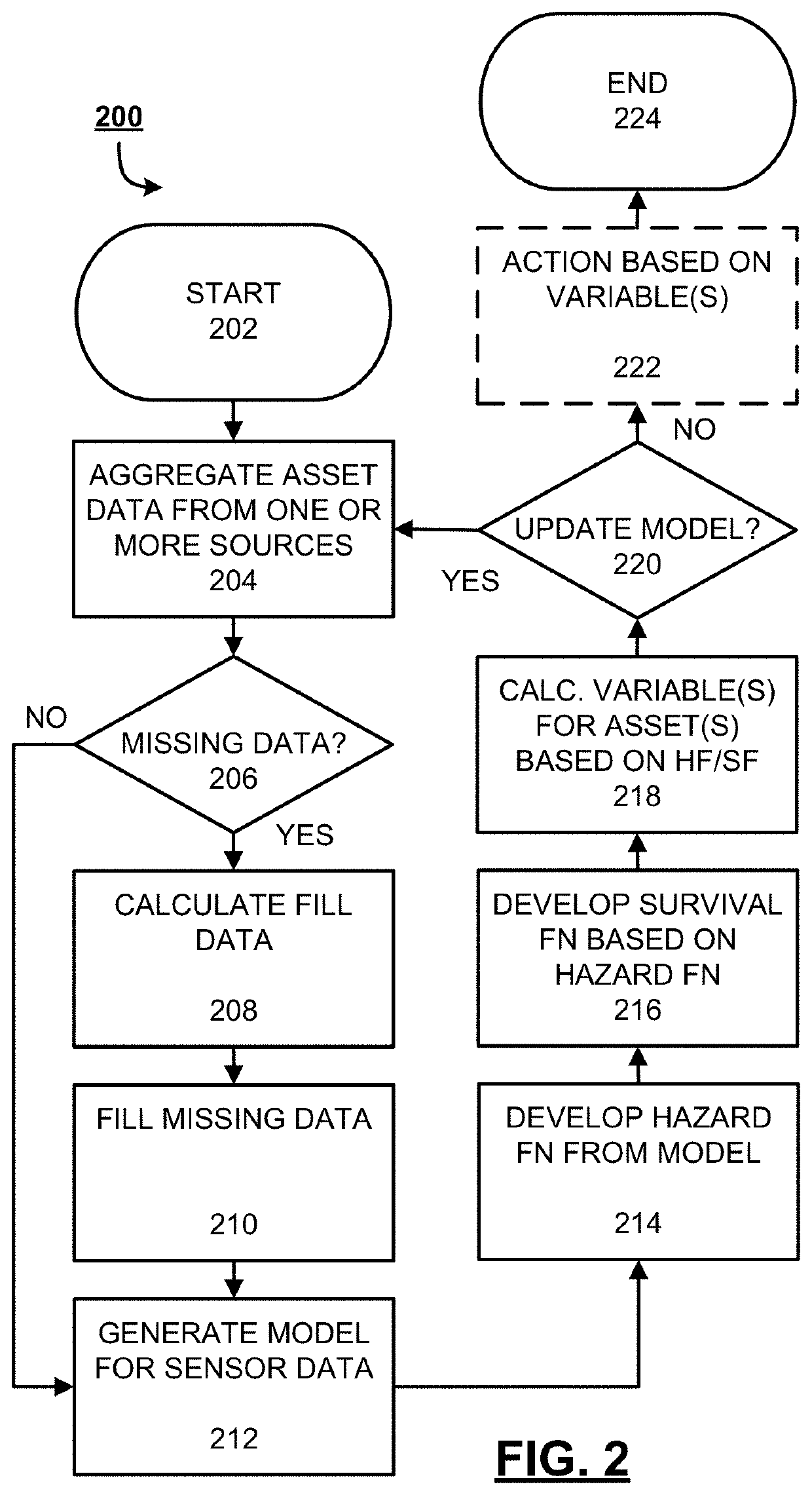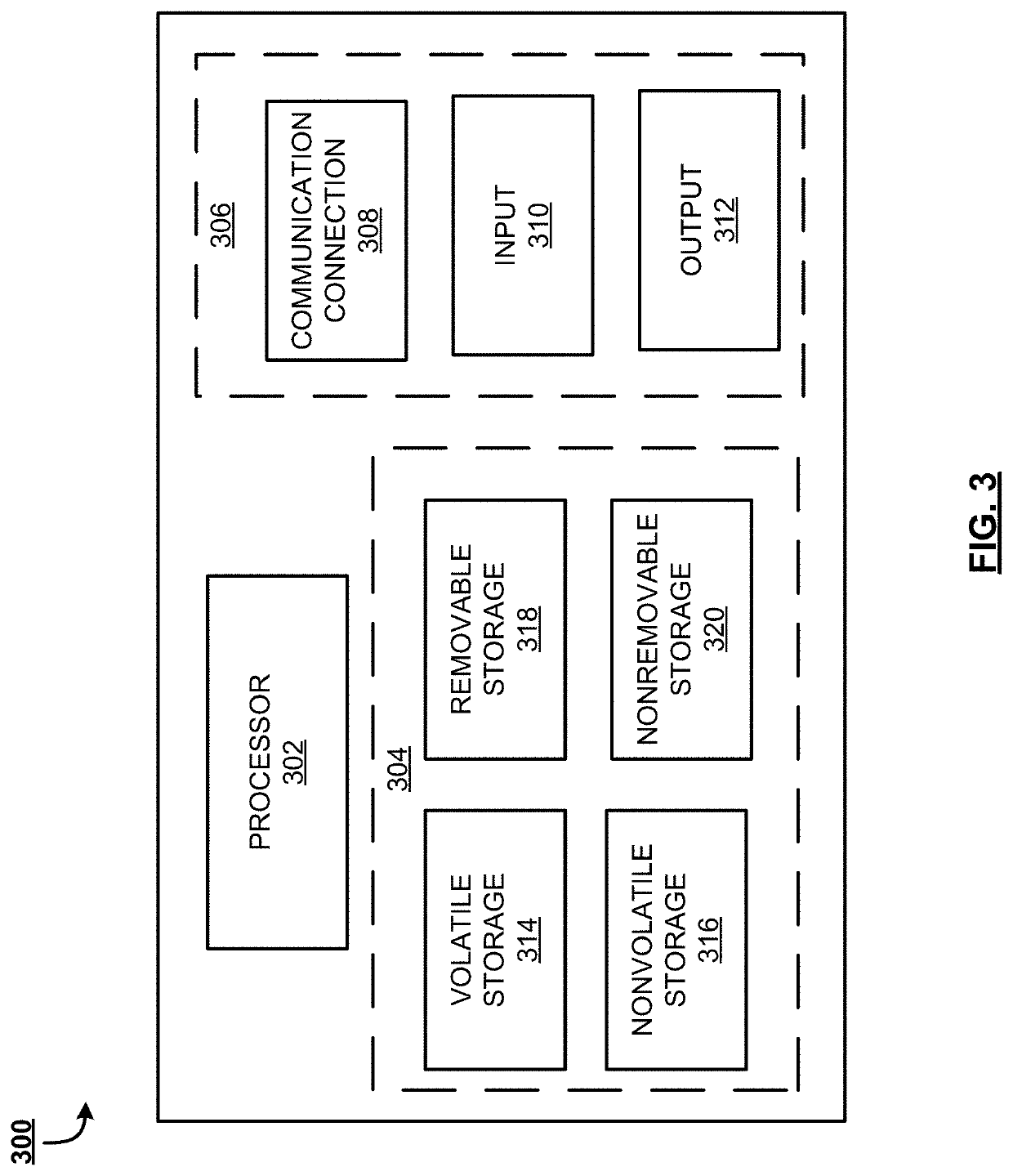Systems and methods for anomaly detection and survival analysis for physical assets
a technology of anomaly detection and survival analysis, applied in the field of monitoring physical assets, can solve the problems of high failure rate, high failure rate, and high failure rate, and achieve the effects of improving survival rate, reducing failure rate, and improving accuracy
- Summary
- Abstract
- Description
- Claims
- Application Information
AI Technical Summary
Benefits of technology
Problems solved by technology
Method used
Image
Examples
Embodiment Construction
[0018]Aspects herein generally relate to unconventional sensor capabilities and analysis to collect real-time data on physical assets and analyze them individually and collectively for actionable survival information. Data can be collected and modeled, and based on models a hazard function and survival function can be generated to explain past phenomena and predict future performance of assets.
[0019]Embodiments can utilize novel convex latent variable modeling, to model both phenomena that lead to an instantaneous increase in the risk of failure (e.g., overloading or other transient factors) and phenomena that degrade the long-term health of the asset (e.g., corrosion or other persistent factors). As suggested, a convex latent variable model can employ uncommon machine learning techniques to find a best set of parameters to model a set of data, in this instance separating transient and latent factors discernible from sensor data. In alternative or complementary embodiments, other mo...
PUM
 Login to View More
Login to View More Abstract
Description
Claims
Application Information
 Login to View More
Login to View More - R&D
- Intellectual Property
- Life Sciences
- Materials
- Tech Scout
- Unparalleled Data Quality
- Higher Quality Content
- 60% Fewer Hallucinations
Browse by: Latest US Patents, China's latest patents, Technical Efficacy Thesaurus, Application Domain, Technology Topic, Popular Technical Reports.
© 2025 PatSnap. All rights reserved.Legal|Privacy policy|Modern Slavery Act Transparency Statement|Sitemap|About US| Contact US: help@patsnap.com



